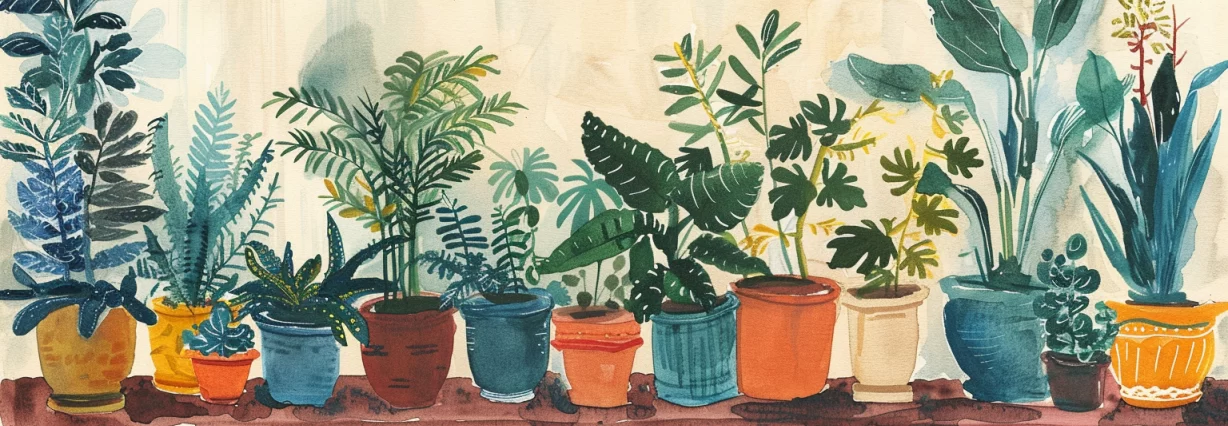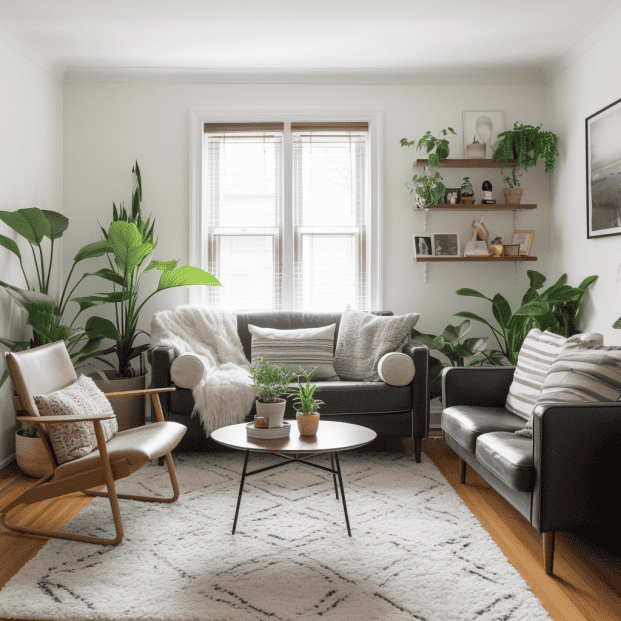Houseplants are an excellent way to add a touch of nature and color to your home decor. Not only do they purify the air, but they also create a calming and relaxing atmosphere. However, with so many different types of houseplants available, it can be challenging to choose the right one that complements your decor style. In this article, we will provide you with tips and tricks on how to pick the right houseplants that match your decor.
When selecting houseplants, it is essential to consider the style and color scheme of your decor. For instance, if you have a modern and minimalist decor style, you may want to opt for plants with clean lines and simple shapes, such as snake plants or succulents. On the other hand, if you have a bohemian or eclectic decor style, you may want to go for plants with more vibrant colors and interesting textures, such as ferns or spider plants.
Another factor to consider when choosing houseplants is the lighting conditions of your home. Some plants require direct sunlight, while others thrive in low light conditions. It is crucial to choose plants that can survive and thrive in the lighting conditions of your home. By selecting the right houseplants, you can create a harmonious and beautiful space that brings a touch of nature indoors.
Understanding Houseplants and Their Needs
When it comes to picking the right houseplants for your decor, it’s important to understand the needs of the plants you’re considering. Different houseplants have different requirements for light, temperature, watering, humidity, potting soil, and drainage. Here are some key factors to consider:
Light and Temperature
Houseplants come in all shapes and sizes, and they have varying requirements for light and temperature. Some plants thrive in bright, indirect light, while others prefer low light. Similarly, some plants prefer warm temperatures, while others prefer cooler temperatures. It’s important to choose plants that will thrive in the conditions of your home.
To determine the light and temperature requirements of a particular plant, check the plant’s tag or do some research online. Some plants that prefer bright, indirect light include the spider plant and the peace lily, while plants that can tolerate low light include the snake plant and the ZZ plant. Some plants that prefer warm temperatures include the rubber plant and the fiddle leaf fig, while plants that prefer cooler temperatures include the Chinese evergreen and the pothos.
Watering and Humidity
Another important factor to consider when choosing houseplants is their watering and humidity requirements. Some plants prefer to be kept moist, while others prefer to dry out between waterings. Similarly, some plants prefer high humidity, while others can tolerate drier air.
To determine the watering and humidity requirements of a particular plant, check the plant’s tag or do some research online. Some plants that prefer to be kept moist include the fern and the calathea, while plants that prefer to dry out between waterings include the succulent and the cactus. Some plants that prefer high humidity include the bird of paradise and the Boston fern, while plants that can tolerate drier air include the spider plant and the snake plant.
Potting Soil and Drainage
Finally, it’s important to consider the potting soil and drainage requirements of your houseplants. Most houseplants prefer well-draining soil that allows excess water to escape, and they require pots with drainage holes to prevent water from pooling at the bottom of the pot.
To ensure your houseplants have the right soil and drainage, choose a potting mix that is specifically formulated for houseplants and make sure your pots have drainage holes. If you’re repotting a plant, be sure to choose a pot that is slightly larger than the plant’s current pot to allow for growth.
By understanding the needs of your houseplants, you can choose the right plants for your decor and ensure they thrive in your home.

Choosing the Right Houseplants
Choosing the right houseplants is essential to create a cozy and welcoming atmosphere in your home. Houseplants not only add beauty to your space, but they also purify the air and improve your mood. Here are some tips to help you choose the right houseplants that match your decor and lifestyle.
Low-Maintenance Indoor Plants
Low-maintenance indoor plants are the perfect choice for you if you’re new to houseplants or don’t have much time to care for them. These plants require minimal watering and can survive in low-light conditions. Some popular low-maintenance indoor plants include snake plants, ZZ plants, and ferns. Snake plants are also known as mother-in-law’s tongue, and they are easy to care for and can survive in low-light conditions. ZZ plants are also low-maintenance and can survive in various lighting conditions. Ferns are perfect for adding a touch of greenery to your space and are easy to care for.
Statement Plants
If you want to make a bold statement with your houseplants, consider adding a statement plant to your collection. These plants are usually large and eye-catching and can become the focal point of your room. Some popular statement plants include the monstera deliciosa, fiddle-leaf fig tree, and bird of paradise. The monstera deliciosa, also known as the Swiss cheese plant, has large, perforated leaves that add texture to your space. The fiddle-leaf fig tree has large, violin-shaped leaves that make a statement in any room. The bird of paradise has large, tropical leaves and bright orange flowers that add a pop of color to your space.
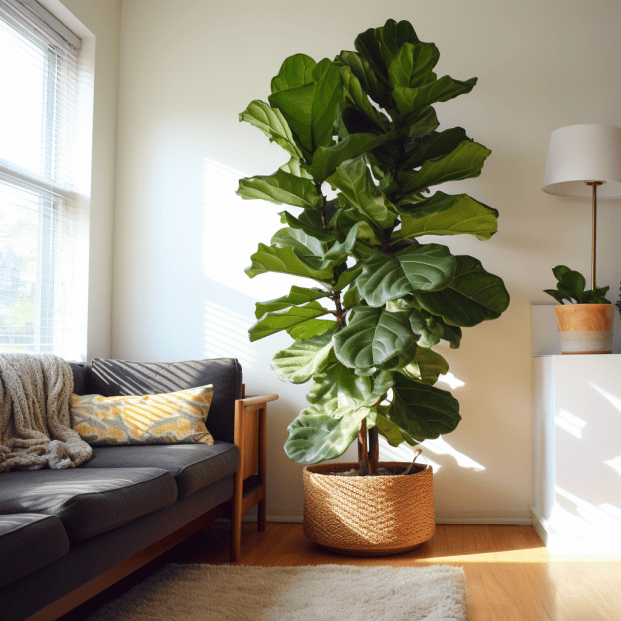
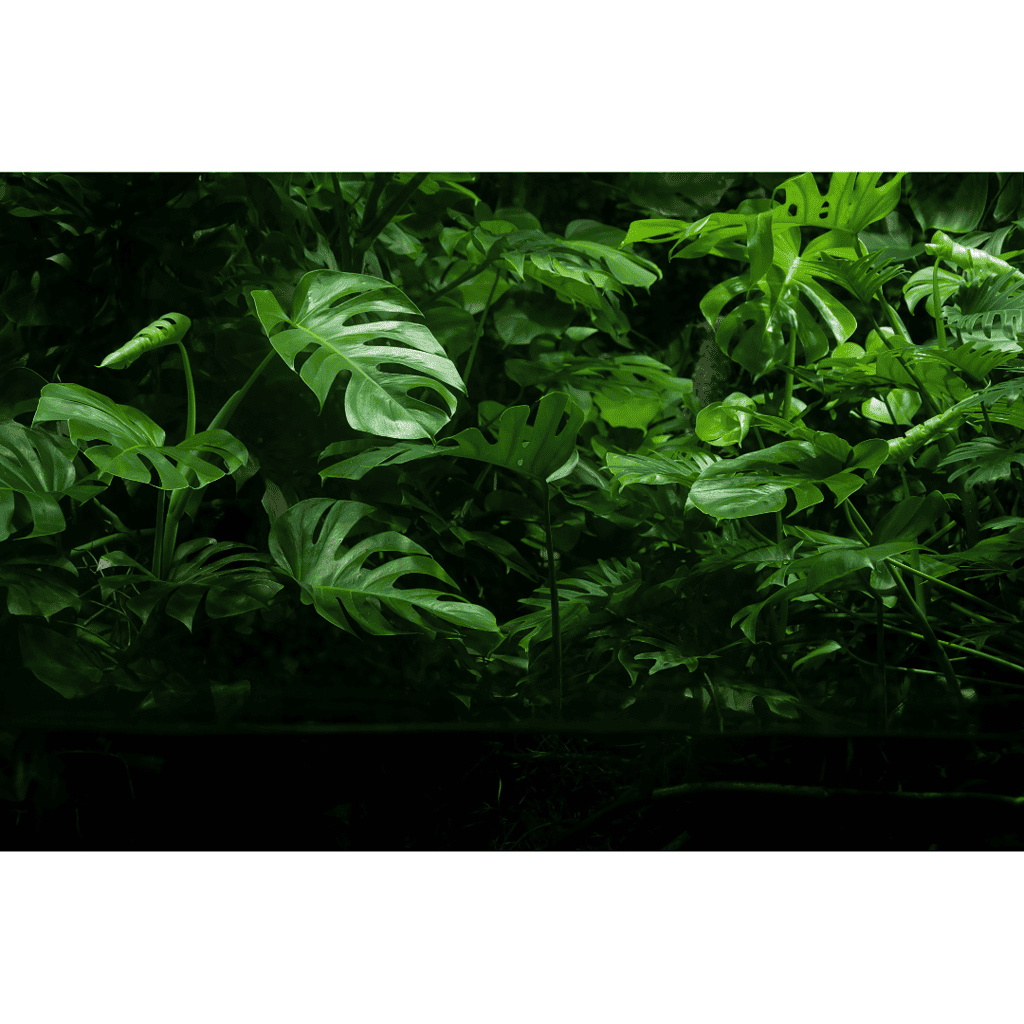
Trailing and Hanging Plants
Trailing and hanging plants are perfect for adding a touch of greenery to your space without taking up too much floor space. These plants can be hung from the ceiling or placed on a high shelf to create a cascading effect. Some popular trailing and hanging plants include the cast iron plant, philodendron birkin, and zamioculcas zamiifolia. The cast iron plant has long, trailing leaves that can survive in low-light conditions. The philodendron birkin has variegated leaves that add a pop of color to your space. The zamioculcas zamiifolia, also known as the ZZ plant, has glossy, green leaves that can survive in various lighting conditions.
In conclusion, choosing the right houseplants can transform your space and create a warm and inviting atmosphere. Consider your lifestyle and decor when selecting houseplants and choose plants that match your needs and preferences.
Matching Houseplants to Your Decor
When it comes to decorating with houseplants, it’s not just about choosing any plant that catches your eye. To create a cohesive and aesthetically pleasing look, matching your houseplants to your decor is important. In this section, we’ll explore some key factors to consider when choosing houseplants that complement your home’s style.
Color and Texture
Color and texture are among the most important factors to consider when matching houseplants to your decor. If your decor is mostly neutral, you might want to choose plants with bold, vibrant colors to add some visual interest. On the other hand, if your decor is already colorful, you might want to choose plants with more subdued tones to avoid overwhelming the space.
In addition to color, texture is also an important consideration. For example, if your decor features a lot of soft, plush fabrics, you might want to choose plants with smooth, glossy leaves to create contrast. Alternatively, if your decor features a lot of natural textures like wood and stone, you might want to choose plants with more textured leaves to complement the space.
Shape and Form
The shape and form of your houseplants can also play a big role in how well they match your decor. For example, if your decor features a lot of clean lines and geometric shapes, you might want to choose plants with a similar aesthetic. On the other hand, if your decor is more organic and free-flowing, you might want to choose plants with a more natural, unstructured shape.
Another factor to consider is the shape of the leaves. For example, plants with long, narrow leaves can help create a sense of height and verticality in a space, while plants with broad, rounded leaves can help create a sense of fullness and roundness.
Height and Structure
The height and structure of your houseplants can also greatly impact how well they match your decor. For example, if you have a tall, narrow space like a hallway or entryway, you might want to choose a tall, narrow plant to help fill the space without overwhelming it. Alternatively, if you have a low, wide space like a coffee table or mantel, you might want to choose a low, sprawling plant to create a sense of fullness and balance.
It’s also important to consider the structure of the plant itself. For example, plants with a lot of branches and foliage can help create a sense of depth and complexity in a space, while plants with a more minimalist structure can help create a sense of simplicity and clarity.
By considering factors like color, texture, shape, form, height, and structure, you can choose houseplants that complement your decor and create a cohesive, visually pleasing look in your home.

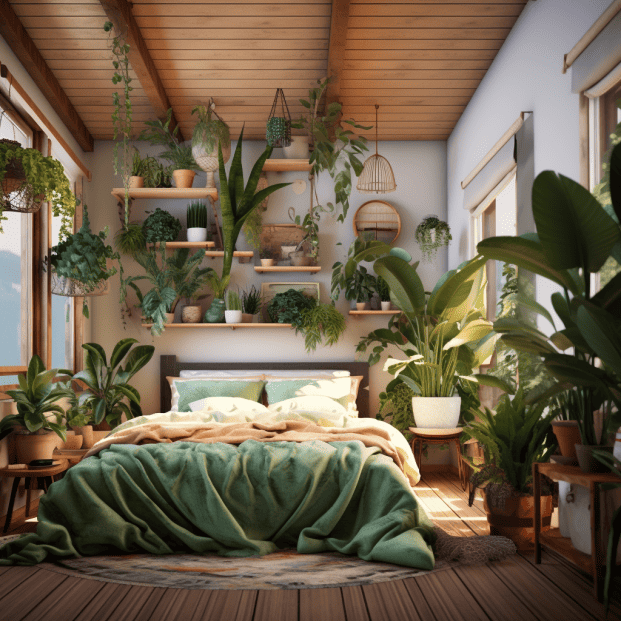
Incorporating Houseplants into Different Interior Styles
Houseplants can enhance the ambiance of any room and add a touch of nature to the interior design. However, it is essential to choose the right houseplants that complement the decor style of the room. Here are some tips for incorporating houseplants into different interior styles:
Minimalist and Scandinavian
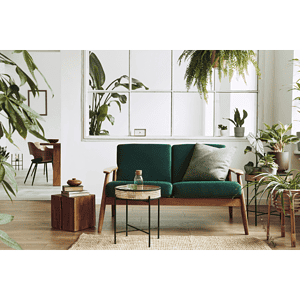
Minimalist and Scandinavian design styles emphasize clean lines, neutral colors, and natural materials such as wood, stone, and bamboo. Houseplants with simple shapes and a minimalist aesthetic work well in these spaces. Consider plants such as the Snake Plant, Rubber Plant, or Fiddle Leaf Fig, which have a straightforward and elegant appearance. These plants also require minimal maintenance, making them perfect for busy homeowners.
Traditional and Farmhouse
Traditional and farmhouse design styles feature warm colors, rustic materials such as wood and brick, and cozy textures. Houseplants with a classic and timeless look, such as the Boston Fern or the English Ivy, are good choices for these spaces. These plants add a touch of greenery without overwhelming the room’s traditional charm.
Modern and Industrial
Modern and industrial design styles often feature a mix of materials such as steel, concrete, and glass. Houseplants with bold and sculptural shapes, such as the Bird of Paradise or the Swiss Cheese Plant, can complement these spaces. These plants add a natural element to the room and create a striking contrast against the industrial materials.
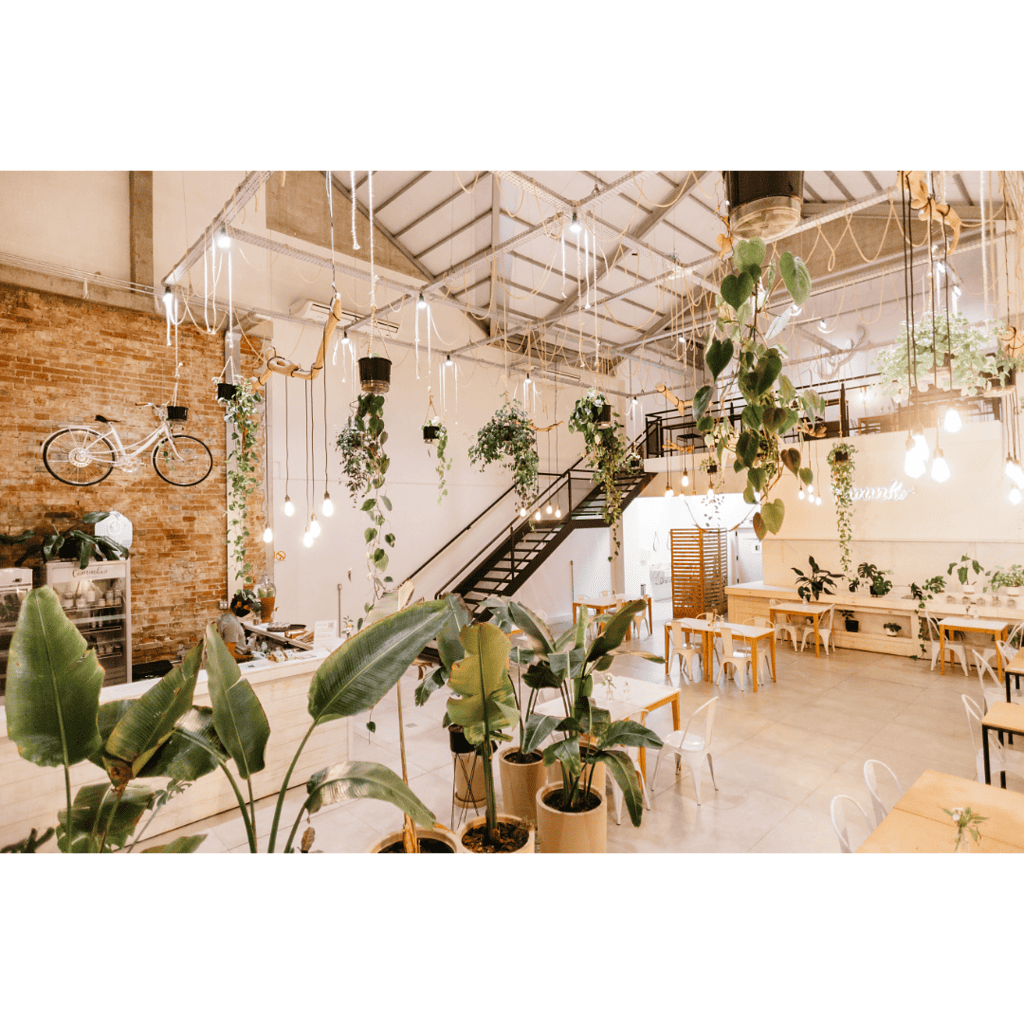
Eclectic and Personal
Eclectic and personal design styles allow homeowners to express their unique personality through their decor. Houseplants with unusual shapes or colors, such as the String of Pearls or the Prayer Plant, can add a quirky and playful touch to these spaces. These plants also provide an opportunity to experiment with different textures and colors and create a personalized and eclectic look.
In conclusion, choosing the right houseplants for different interior styles can enhance the overall aesthetic of the room. By considering the decor style and selecting plants that complement it, homeowners can create a harmonious and inviting space that incorporates nature and adds a touch of greenery to their home.
Creating a Greenery-Filled Environment
Adding houseplants to your home can create a refreshing and inviting atmosphere. Whether you’re looking to add a touch of greenery to your living room or brighten up your bedroom, there are numerous options to choose from. Here are a few tips to help you pick the right houseplants to match your decor.
Placement and Light Needs
When selecting houseplants, it’s important to consider their placement and light needs. Some plants require direct sunlight, while others thrive in low light conditions. Before purchasing a plant, determine the amount of natural light that the room receives and choose a plant that can thrive in that environment. For example, snake plants and ZZ plants are great options for low light areas, while succulents and cacti prefer bright, indirect sunlight.
Containers and Decorative Pots
Choosing the right container or decorative pot can enhance the overall aesthetic of your houseplants. Consider the style and color of the pot and how it will complement the decor of the room. Additionally, be sure to select a pot that is the appropriate size for the plant. A pot that is too small can restrict growth, while a pot that is too large can cause overwatering.
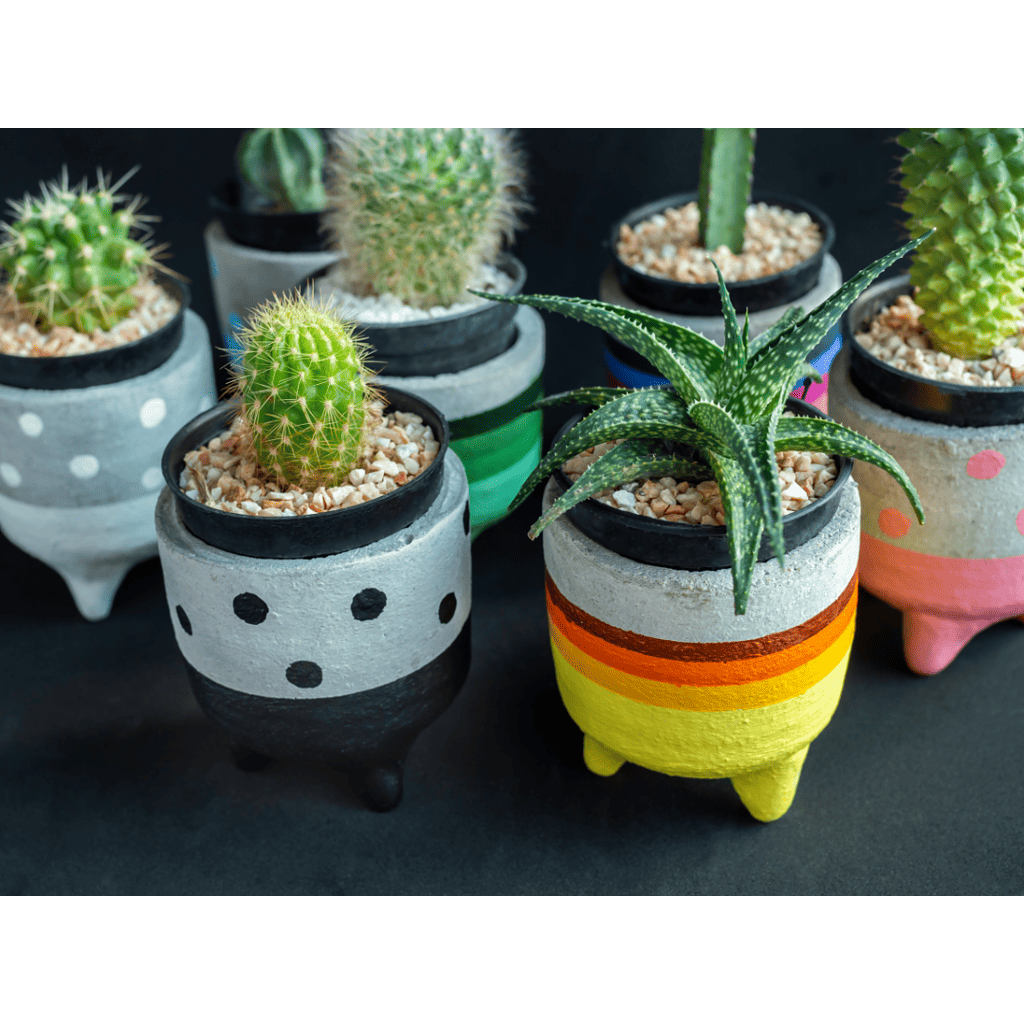
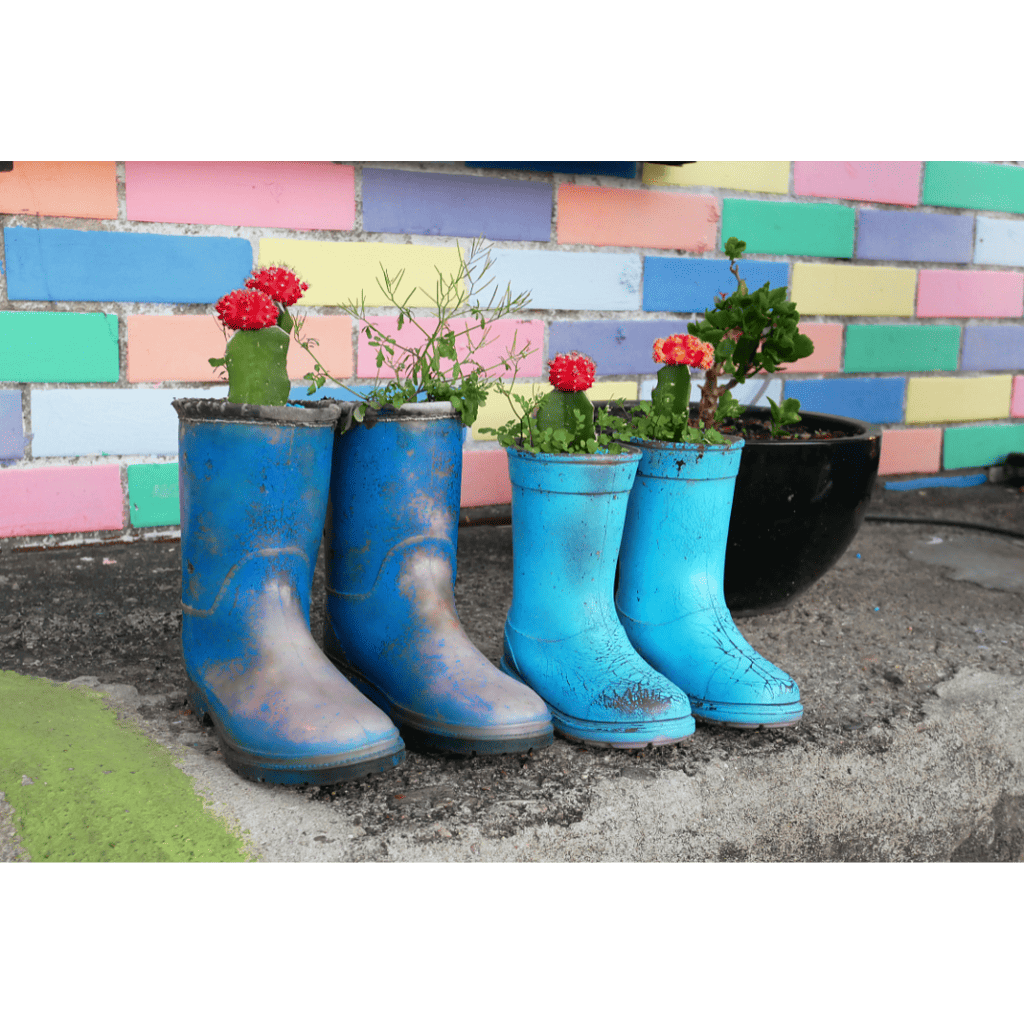
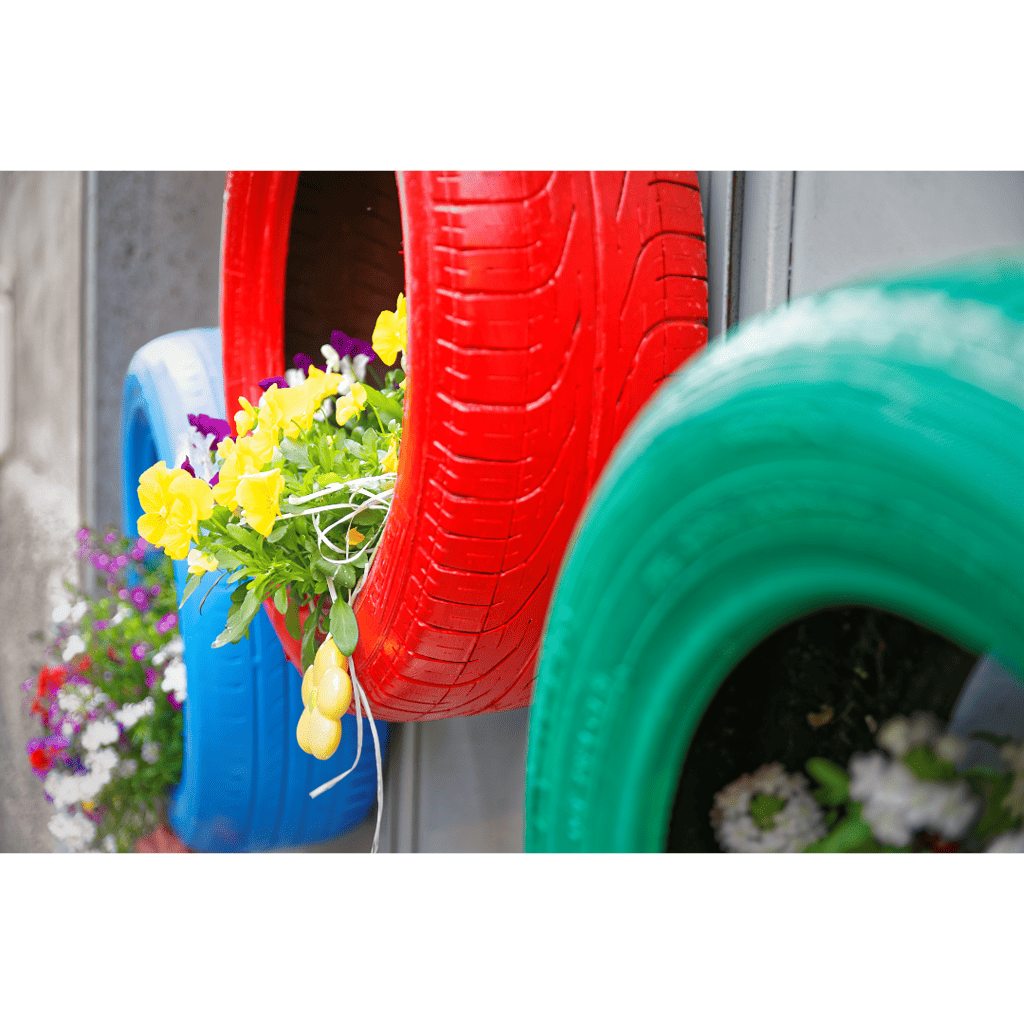
Indoor Spaces and Planning
When planning to add houseplants to your home, consider the layout and design of the indoor spaces. Determine which areas would benefit from greenery and how the plants will fit into the existing decor. For example, hanging plants can add visual interest to a room with high ceilings, while a tall plant can add height to a corner or empty space. Additionally, consider the placement of windows and how natural light will affect the growth of the plants.
By considering the placement and light needs of the plants, choosing the right containers and decorative pots, and planning for the indoor spaces, you can create a greenery-filled environment that complements your decor.
Caring for Your Houseplants
Routine Care
Taking care of houseplants is not as complicated as it may seem. By following a few simple guidelines, you can keep your plants healthy and thriving. Here are some tips for routine care:
- Watering: Different plants have different watering needs. Overwatering can lead to root rot, while underwatering can cause the plant to wilt. As a general rule, water your plants when the top inch of soil feels dry to the touch. Avoid letting the plant sit in standing water, as this can also lead to root rot.
- Light: Most houseplants prefer bright, indirect light. However, some plants, such as ferns, prefer lower light conditions. Make sure to research the light requirements of your specific plant and place it in an appropriate location.
- Fertilizing: Houseplants benefit from regular fertilization, especially during the growing season. Use a balanced fertilizer and follow the instructions on the package. Over-fertilizing can burn the plant’s roots and cause damage.
- Pruning: Regular pruning can help keep your plant looking healthy and prevent it from becoming too leggy. Remove any dead or yellowing leaves and trim back any overgrown stems.
Handling Common Issues
Even with proper care, houseplants can sometimes encounter issues. Here are some common problems and how to handle them:
- Pest infestations: Common houseplant pests include spider mites, mealybugs, and scale insects. Use an insecticidal soap or neem oil to treat the affected plant.
- Root rot: Overwatering can cause the plant’s roots to rot. If you suspect root rot, remove the plant from its pot and inspect the roots. Trim away any mushy or black roots and repot the plant in fresh soil.
- Yellow leaves: Yellowing leaves can be a sign of overwatering, underwatering, or nutrient deficiencies. Adjust your watering schedule and consider fertilizing your plant.
- Brown tips: Brown tips on the leaves can be a sign of low humidity. Increase the humidity around the plant by misting it regularly or placing a tray of water nearby.

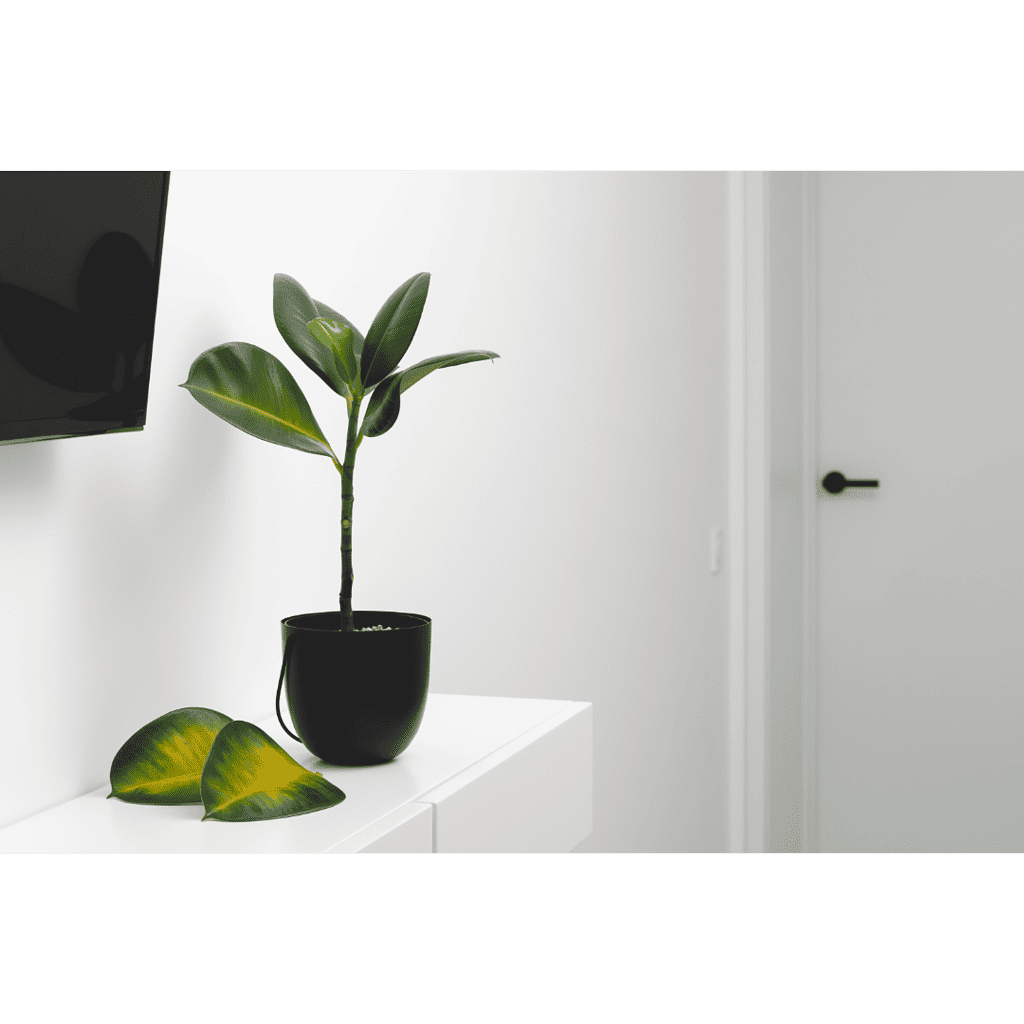
Some popular houseplants that are relatively easy to care for include snake plants, pothos, Swiss cheese plant, and anthurium. By following these care guidelines, you can keep your houseplants healthy and beautiful.
Conclusion
Choosing the right houseplants to match your decor can be a fun and rewarding experience. By assessing the light in your home and considering your personal style, you can find the perfect plants to enhance your space.
When it comes to plant selection, there are a variety of options to choose from. Succulents are a popular choice for their low-maintenance care and unique shapes, while tropical plants can add a lush, exotic feel to any room. Flowers are a great way to add color and fragrance to your space, and there are many types of indoor plants that bloom year-round.
It’s important to keep in mind that different plants have different needs when it comes to light, water, and temperature. Some plants thrive in bright, indirect light, while others prefer low-light conditions. Make sure to research the specific needs of your chosen plants to ensure they will thrive in your home.
Overall, incorporating houseplants into your decor can have a variety of benefits, from improving air quality to reducing stress and boosting mood. With a little bit of research and care, you can find the perfect plants to match your style and enhance your living space.
Frequently Asked Questions
What are some popular houseplants to match different decor styles?
There are many houseplants to choose from, and the right one for your space will depend on your decor style. For a modern or minimalist look, consider a snake plant or a ZZ plant. If you prefer a bohemian or eclectic style, try a fiddle leaf fig or a monstera. For a more traditional look, go for a peace lily or a spider plant.
How do you choose the right size and shape of houseplants for your space?
When choosing a houseplant, consider the size and shape of your space. If you have a small room, choose a smaller plant that won’t overwhelm the space. If you have a larger room, go for a taller or broader plant to fill the space. You can also choose plants with different shapes and textures to add visual interest.
What are some tips for arranging plants on a shelf?
Arranging plants on a shelf can be a great way to add greenery to your space. Start by choosing plants of different sizes and shapes to create visual interest. Group plants of similar heights together, and vary the heights of the groups to create depth. You can also add decorative objects like books or candles to the shelf to create a cohesive look.
What are some Feng Shui principles for placing plants in your home?
According to Feng Shui principles, plants can bring positive energy into your home. To use plants in Feng Shui, place them in the east, southeast, or south areas of your home. Choose plants with rounded or soft leaves, and avoid plants with sharp or spiky leaves. You can also use plants with different colors to represent different elements, such as green for wood and red for fire.
What are some creative ways to decorate with plants in your bedroom?
Plants can add a calming and relaxing atmosphere to your bedroom. Hang plants from the ceiling or place them on a windowsill to bring in natural light. You can also create a plant wall or use a plant as a centerpiece on your nightstand. Choose plants with air-purifying qualities, like aloe vera or spider plants, to improve the air quality in your bedroom.
What are some outdoor plant arrangement ideas for a small space?
If you have a small outdoor space, there are still many ways to incorporate plants. Use hanging baskets to add greenery without taking up floor space. You can also use vertical planters or plant stands to create a layered look. Choose plants that are suited to your climate and the amount of sunlight your space receives. Succulents and herbs are great options for small outdoor spaces.

